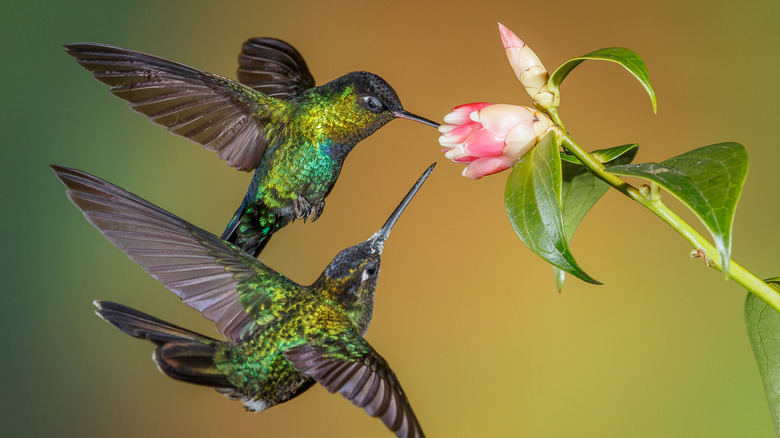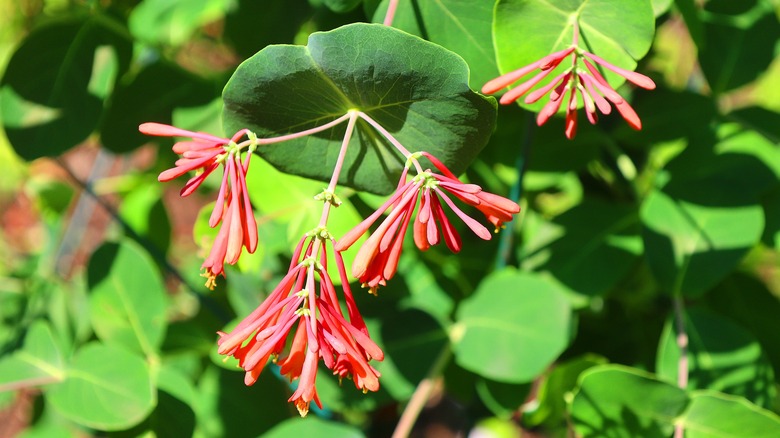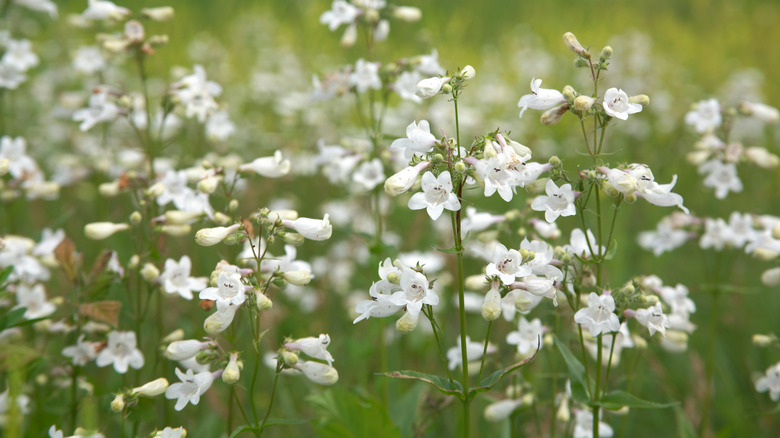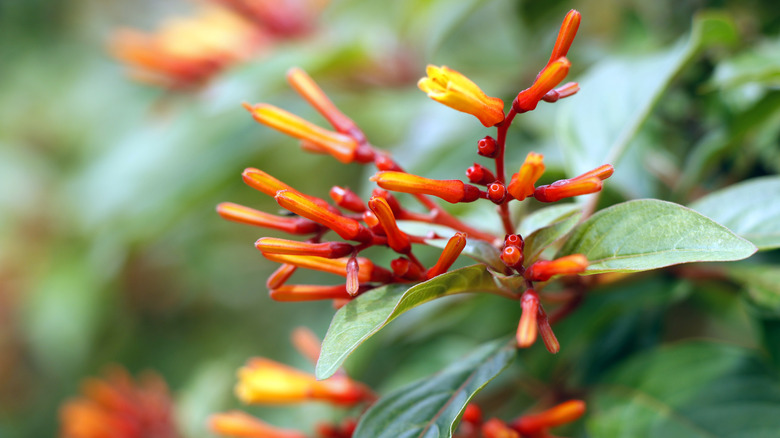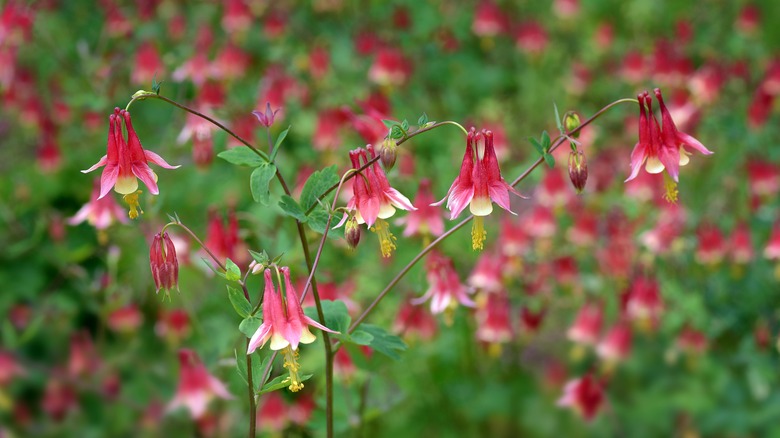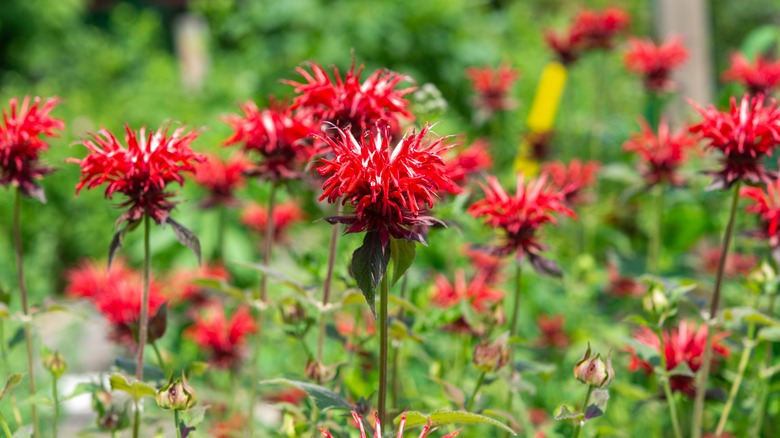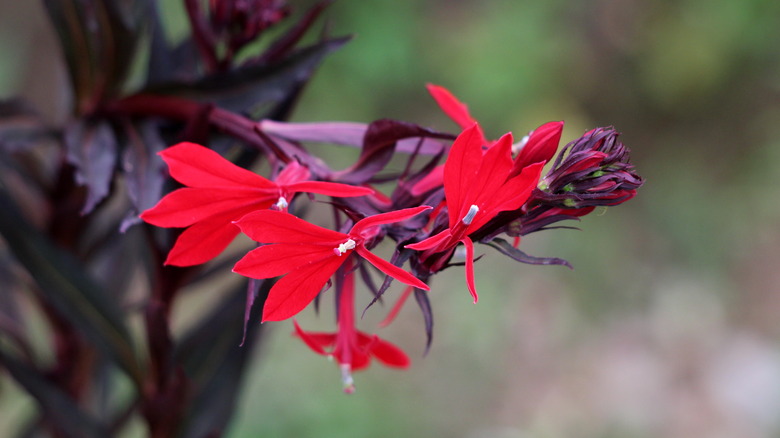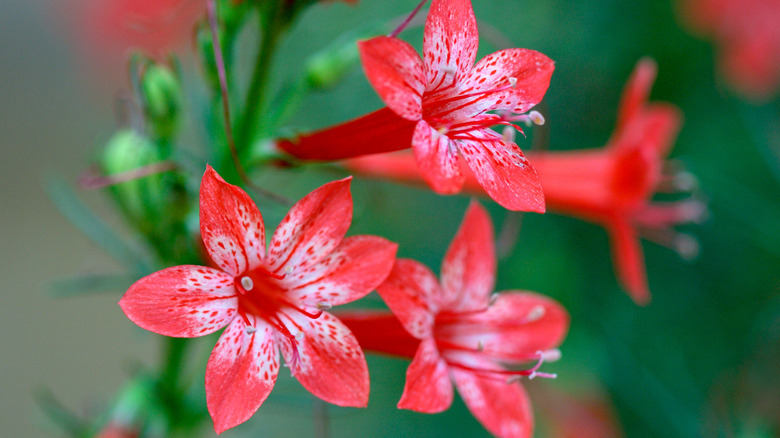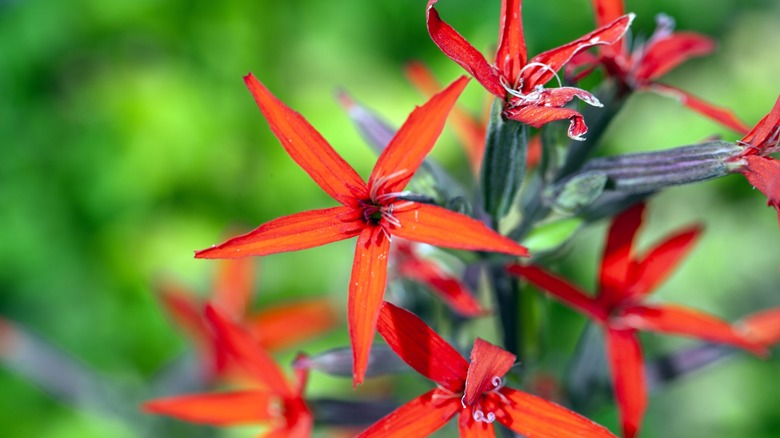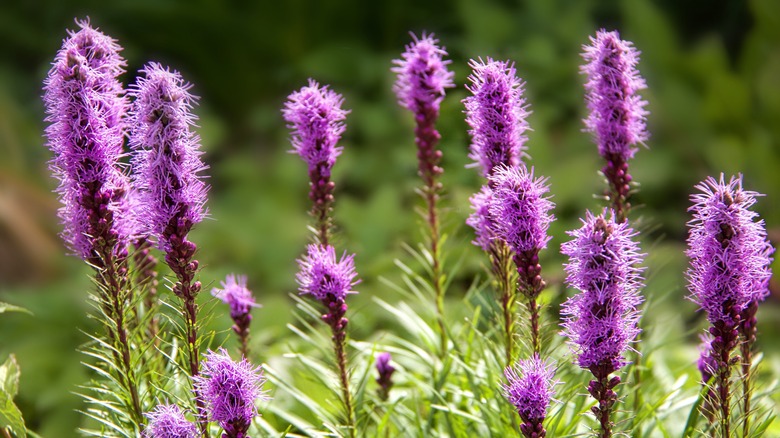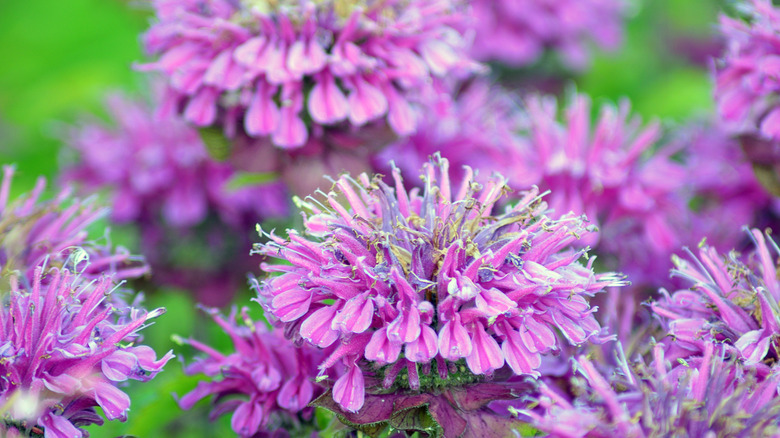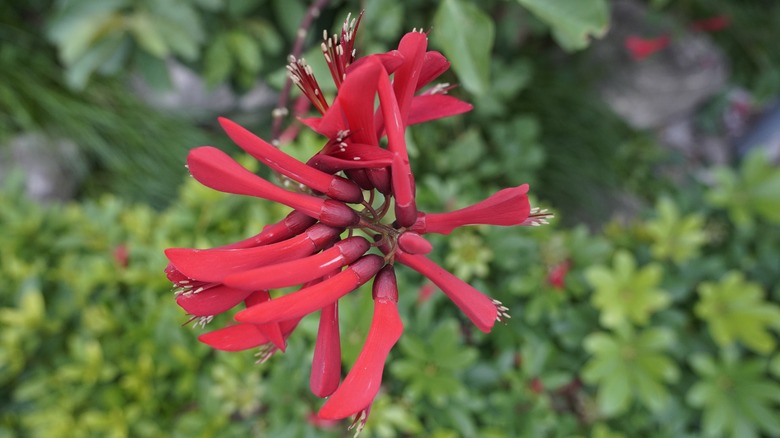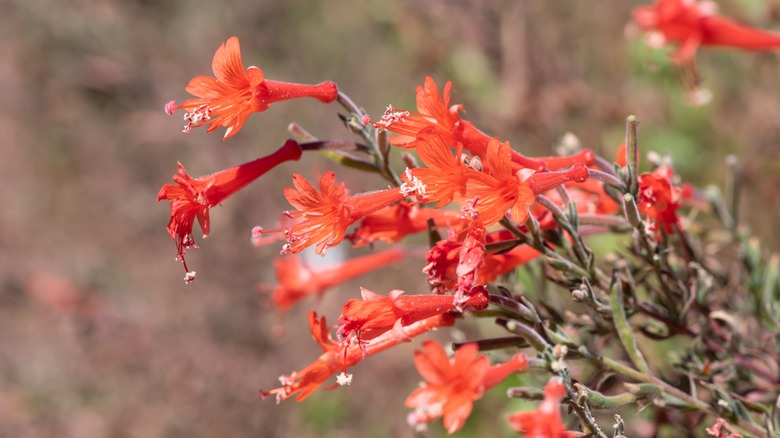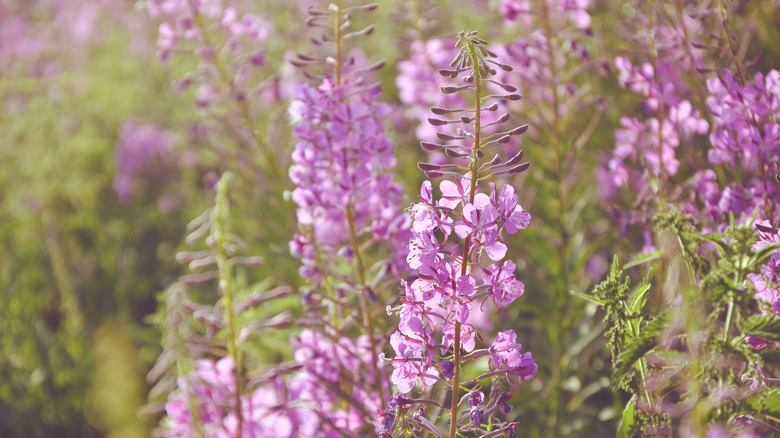13 Native Plants To Attract Hummingbirds While Enhancing Your Garden's Aesthetic
There is nothing as beautiful as the sight of hummingbirds dancing and flitting from flower to flower in your own backyard. These wonderful creatures are small but mighty, infamous for their remarkable migration and high energy levels. As hummingbirds are always on the move, they need a lot of sustenance. To help them out and bring biodiversity into your garden, you can make your yard a hummingbird haven by planting native flowers. There are a lot of beautiful blooms that draw more hummingbirds into your yard while also making it look amazing. Plants like coral bean, cardinal flower, and scarlet sage bring color and texture to your yard while also attracting hummingbirds for the sweet nectar.
Hummingbirds are attracted to brightly colored, tubular flowers. Thankfully, these types of flowers are also pretty nice to look at! Hues of red, orange, and pink liven up your space while making it a hive of hummingbird activity. When picking native plants to attract hummingbirds, try to have a wide selection of bloom times. You want them to have food in the spring and summer for nesting, and also food in the fall to help them out as they begin their migration.
Coral honeysuckle
Coral honeysuckle (Lonicera sempervirens) is native to the eastern U.S. and can be grown in USDA hardiness zones 4 through 10. Blooming in spring and summer, coral honeysuckle brings hummingbird-approved red clusters of flowers to your yard that decorate the dark green, fleshy leaves. As a vine that can grow up to 15 feet in length, coral honeysuckle does well when planted on trellises and fences. However, you can use it as ground cover, allowing it to grow and sprawl around your garden. It prefers full sun and is drought-tolerant and low-maintenance once it has established itself.
Foxglove beardtongue
To balance out the bright colors of the other native, hummingbird-friendly plants, you may wish to bring foxglove beardtongue (Penstemon digitalis) into your yard. This delicate white flower is native to the eastern and southeastern U.S. and does well in zones 3 to 8. Blooming from spring to mid-summer, foxglove beardtongue prefers full sun and well-drained soil. Once it has established itself, it is tolerant of drought. It is a fairly short-lived perennial, so it is helpful to collect the seeds from the plant to grow more in the future.
Firebush
The name says it all. Firebush (Hamelia patens) brings bright, fiery blooms into your yard from late spring right up until the first frost. As an evergreen shrub native to Florida, firebush will add color to your garden throughout the seasons, with its green leaves brightening up the winter months. However, it is only winter hardy in zones 9 to 11, so you may want to skip this one if you live in a colder climate. Firebush grows best when planted in full sunlight in well-drained soil. There are dwarf varieties of firebush, but these are not native.
Columbine
With their droopy pink and yellow flowers, columbine (Aquilegia canadensis) has a quaint and cottage-like feel. This plant is native to the eastern U.S. and can be grown in zones 3 through 8. It blooms in April and May and thrives in full sun or partial shade. However, if you do plant it in full sun, make sure that you keep the soil moist during the hotter months. Columbine self-seeds readily, so you can enjoy more blooms cropping up year after year to keep hummingbirds returning. The new plants will bloom in their second year.
Scarlet beebalm
Scarlet beebalm (Monarda didyma) brings bright red, firework-like blooms into your yard during the summer months that hummingbirds adore. Native to the eastern U.S., you can grow scarlet beebalm in hardiness zones 4 to 9. It thrives in rich, moist soil in either full sun or partial shade and can grow to a height of 4 feet, with its beautiful blooms sitting atop each stem. This native perennial can spread pretty rapidly through underground stolons, making it perfect for a more wild garden. As bees nest in its dead stems, it is good to avoid cutting them back too much.
Cardinal flower
The cardinal flower (Lobelia cardinalis) is a perennial that blooms with stunning red flowers that hummingbirds can't resist. Found across the U.S and growing up to 4 feet in height, the cardinal flower produces spikes of tubular blooms that appear from July to September. It is suitable to grow in hardiness zones 3 to 9 in both shade and full sun. Although they are fairly low-maintenance, cardinal flowers do need constant moisture, so keep an eye on the soil during the warmer months. If you live in a hot region, it will do better with a little bit of shade.
Standing cypress
Another bright, upright bloomer, the standing cypress (Ipomopsis rubra) is native to the southeastern U.S. and can be grown in hardiness zones 6 to 9. Its thin, spiky leaves allow its star-shaped red flowers to be the focal point, with its blooms lasting from June until August. Standing cypress does well in dry, sandy, or rocky soils in both sun and partial shade, making it a great plant for those living in warmer regions. As a biennial, a standing cypress will die after blooming for a second year. However, it will reseed before doing so.
Royal catchfly
With its slender petals and scarlet blooms, the royal catchfly (Silene regia) is a fun, hummingbird-friendly addition to your yard. It is native to the central and southern U.S. and can be grown in hardiness zones 5 to 8. It's a tall-growing plant, reaching a height of 4 feet, and blooms from May to September, depending on your location. If you want to plant royal catchfly in your garden, pick a spot in full sun or partial shade with good drainage. It does well in gravelly or sandy soils.
Blazing star
Blazing star (Liatris spicata) is a tall, upright perennial that has spikes of dense, fluffy, purple flowers. If you are looking for a bloom that is less bright and bold but still attracts hummingbirds, blazing star is a fantastic choice. It is native to the eastern U.S. and can be grown in zones 3 to 8. Plant blazing star in full sunshine in well-drained soil. Once it has established itself, it is a low-maintenance plant that will bloom from July to September year after year. Its seeds are a favorite of songbirds.
Wild bergamot
Wild bergamot (Monarda fistulosa) is the purple variety of scarlet beebalm. Instead of red flowers, wild bergamot has pastel lilac petals that look just like pompoms. It also prefers drier soils and is more tolerant of drought. Native across the U.S., wild bergamot can be grown in hardiness zones 3 to 9. It does well in both full sun and partial shade and blooms from July to September. You can grow wild bergamot in a range of soils, as it is pretty adaptable and tolerant of poorer conditions.
Coral bean
If you are looking for a long bloomer to keep hummingbirds fed, coral bean (Erythrina herbacea) may be perfect for you. Its thin red flowers decorate the plant from spring well into fall, and its intriguing black seed pods burst open in the later months to reveal shiny seeds. You can grow coral bean in zones 8 to 11, and it can do well in a range of soils. However, it does prefer well-drained, fertile sandy soils. Plant coral beans in full sun or partial shade. Once established, it doesn't need much attention.
California fuchsia
A west coast native, California fuchsia (Epilobium canum) can be grown in hardiness zones 7 to 10. It has orange, tubular blooms that cover the silvery-green foliage in summer and fall, with its never-ending blooms perfect for migratory hummingbirds. You can grow California fuchsia in full sun or partial shade in a range of soils. It is a hardy and easy-going plant, adapting well to containers, drought, and poor soils. Although it will die back in the winter months, your California fuchsia will start to come back in February.
Fireweed
Fireweed (Chamerion angustifolium) is native across the U.S., with its purple blooms livening up woods and roadsides from June until September. Growing up to 5 feet, fireweed is a dense wildflower that can spread persistently in garden settings. However, if you keep on top of the deadheading to prevent self-seeding, fireweed can be an excellent addition to your yard. It is suitable for zones 2 through 7 and can be grown in full sun or partial shade. It needs constant moisture to really thrive and can suffer under too much heat.
